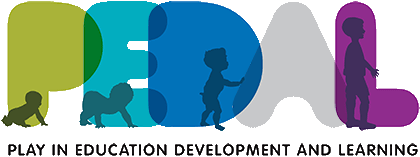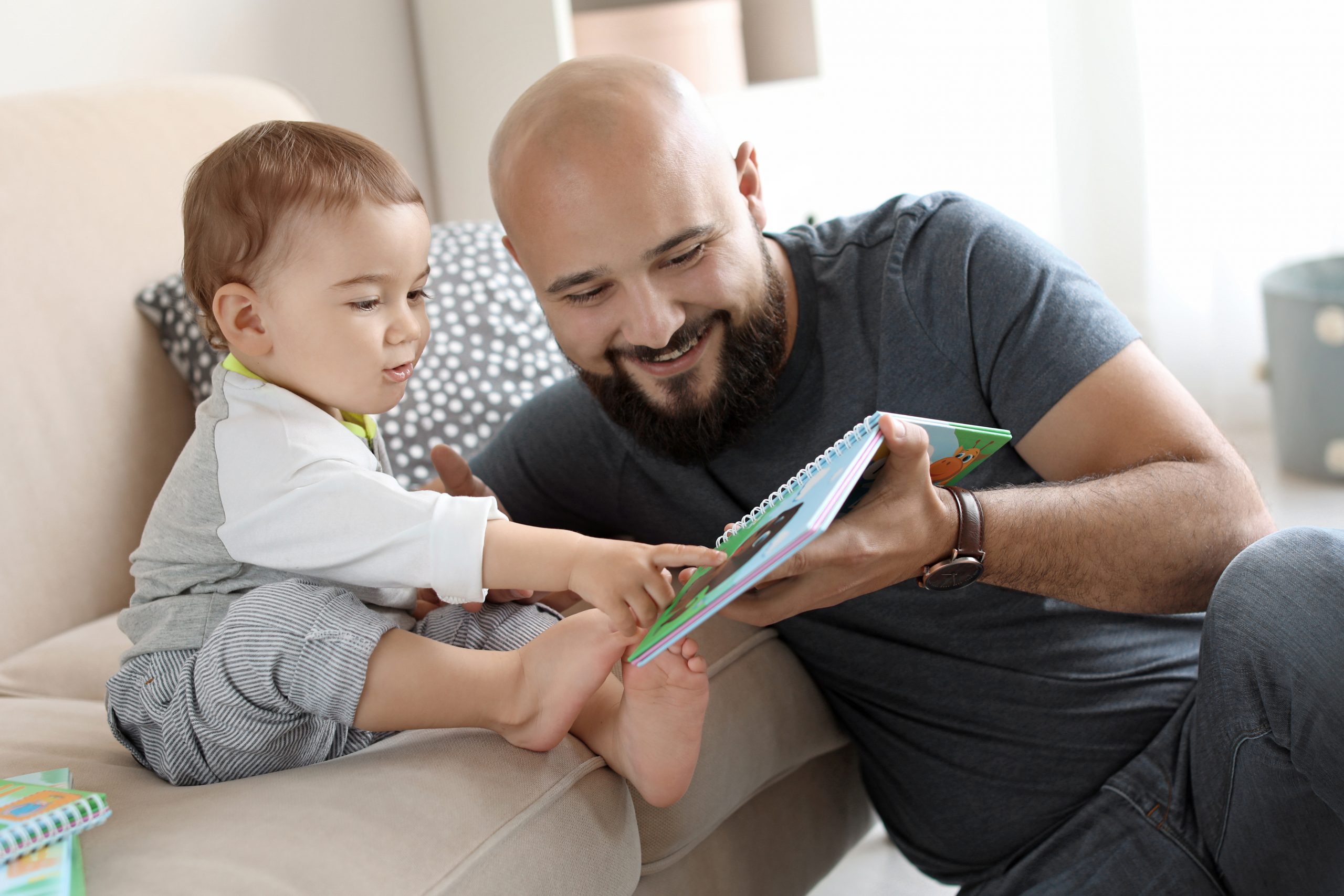Evaluating Playfulness: Construct Validity of the Children’s Playfulness Scale
This study was designed to examine the underlying structure of the Children’s Playfulness Scale (CPS). The CPS was administered to 602 children who were randomly divided into two groups (calibration and validation group). The calibration group (n= 279) included 137 boys and 142 girls, and the validation group (n= 323) included 162 boys and 161 […]
This study was designed to examine the underlying structure of the Children’s Playfulness Scale (CPS). The CPS was administered to 602 children who were randomly divided into two groups (calibration and validation group). The calibration group (n= 279) included 137 boys and 142 girls, and the validation group (n= 323) included 162 boys and 161 girls, ranging in age from 4 to 6 years. A one-factor model was postulated and supported. According to the model, 5 variables measuring children’s playfulness loaded on one factor (playfulness). In addition, the proposed model was found to be invariant across the two groups. Good cross-generalizability of the CPS appears to support its validity. Educators working in a preschool/kindergarten setting may use it with confidence when evaluating children’s playfulness.
Within Cultural Differences: Examining Individual Differences in Korean American and European American Preschoolers’ Social Pretend Play
Individual differences in 30Korean American and 30 European American preschoolers’ play behavior were examined to understand how intracultural variations in children’s skills and behavioral characteristics may be associated with social pretend play in early childhood. Observers recorded the children’s social behaviors and play complexity. Teachers rated children’s social behavior, parents completed a child rearing question- […]
Individual differences in 30Korean American and 30 European American preschoolers’ play behavior were examined to understand how intracultural variations in children’s skills and behavioral characteristics may be associated with social pretend play in early childhood. Observers recorded the children’s social behaviors and play complexity. Teachers rated children’s social behavior, parents completed a child rearing question- naire, and children were given the Wechsler Preschool and Primary Scale of Intelli- gence–Revised and the Multidimensional Stimulus Fluency Measure. The findings showed that there were similar patterns predictive of pretend play for both groups.Over- all, children’s interactive style, positive social interaction with peers, and creativity scores significantly predicted pretend play. The results suggest that individual factors related to pretend play transcend culture.
Children’s Daily Activities in a Mayan Village: A Culturally Grounded Description
Building on recent efforts to reconceptualize development and socialization as contextually grounded processes, several aspects of Yucatec Mayan children’s daily lives are observed, including maintenance activities, social orientation, work, and play. For each category of activity, the behavior of children ranging in age from 0 to 17 is described. Three principles of engagement generated to […]
Building on recent efforts to reconceptualize development and socialization as contextually grounded processes, several aspects of Yucatec Mayan children’s daily lives are observed, including maintenance activities, social orientation, work, and play. For each category of activity, the behavior of children ranging in age from 0 to 17 is described. Three principles of engagement generated to explain the Mayan cultural context (primacy of adult work, parental beliefs, and independence of child motivation) are used to interpret the descriptive data, illustrating how cultural understanding enables a meaningful interpretation of Mayan children’s behavior and how lack of knowledge of these principles could lead to a misinterpretation through a Western cultural lens.
Containing children: some lessons on planning for play from New York City
This paper relates the history of playground provision in New York to changing conceptions of childhood, and specifically to a felt need to ’contain’ children in order to keep them off the streets, safe from traffic and unsavoury influences – a trend that children have tended to resist. Playgrounds most often substitute a narrow range […]
This paper relates the history of playground provision in New York to changing conceptions of childhood, and specifically to a felt need to ’contain’ children in order to keep them off the streets, safe from traffic and unsavoury influences – a trend that children have tended to resist. Playgrounds most often substitute a narrow range of physical activity for the spontaneous play in diverse environments that children more naturally crave. Not only do playgrounds fail to satisfy the complexity of children’s developmental needs, they also tend to separate children from the daily life of their communities – exposure to which is fundamental to the development of civil society. What is needed, argues the author, is not more segregated playgrounds, but a greater attempt to make neighbourhoods safe and welcoming for children, responding to their own preferences for free play close to home.
Children’s Risky Play from an Evolutionary Perspective: The Anti-Phobic Effects of Thrilling Experiences
This theoretical article views children’s risky play from an evolutionary perspective, addressing specific evolutionary functions and especially the anti-phobic effects of risky play. According to the non-associative theory, a contemporary approach to the etiology of anxiety, children develop fears of certain stimuli (e.g., heights and strangers) that protect them from situations they are not mature […]
This theoretical article views children’s risky play from an evolutionary perspective, addressing specific evolutionary functions and especially the anti-phobic effects of risky play. According to the non-associative theory, a contemporary approach to the etiology of anxiety, children develop fears of certain stimuli (e.g., heights and strangers) that protect them from situations they are not mature enough to cope with, naturally through infancy. Risky play is a set of motivated behaviors that both provide the child with an exhilarating positive emotion and expose the child to the stimuli they previously have feared. As the child’s coping skills improve, these situations and stimuli may be mastered and no longer be feared. Thus fear caused by maturational and age relevant natural inhibition is reduced as the child experiences a motivating thrilling activation, while learning to master age adequate challenges. It is concluded that risky play may have evolved due to this anti-phobic effect in normal child development, and it is suggested that we may observe an increased neuroticism or psychopathology in society if children are hindered from partaking in age adequate risky play.
Three decades in: Priming for meta-analysis in play-literacy research
In this literature review, we examined 30 years of play-literacy inquiry through a quantitative lens in order to identify, assemble and summarize studies of sufficient methodological strength to form a corpus of research that encourages meta-analytic thinking. First, a multi-phase search of the literature was conducting yielding 192 studies that addressed pretend play and early […]
In this literature review, we examined 30 years of play-literacy inquiry through a quantitative lens in order to identify, assemble and summarize studies of sufficient methodological strength to form a corpus of research that encourages meta-analytic thinking. First, a multi-phase search of the literature was conducting yielding 192 studies that addressed pretend play and early literacy variables. Subsequent screening resulted in a total of 16 studies that met inclusion criteria, constituting a corpus of primary research that quantitatively measured play-literacy relationships in early childhood educational settings serving children ages 3—7. Next, several content analyses were used to describe and organize the corpus as a resource for meta-analytic thinking. The first round of analysis focused on developing a survey matrix that organized the particulars of individual studies into categories of information conducive to a meta-analytic approach. The second round probed for the theory of change used to explain the relations between pretend play interventions and early literacy skills. The third round entailed creating an effect size type matrix. Notably, most of the corpus studies showed modest to large effect sizes on a selected set of dependent variables which points to the potential of meta-analysis for better understanding the practical significance of the play-literacy relationship in promoting the acquisition of early literacy skills.
Rough-and-Tumble Play and the Development of the Social Brain
Asian and Euro-American parents’ ethnotheories of play and learning: Effects on preschool children’s home routines and school behaviour
Asian and Euro-American parents of preschool-aged children were interviewed concerning their beliefs about the nature and purpose of play; they also completed two questionnaires and a diary of their children’s daily activities. The children’s teachers were interviewed and provided information about the behaviour of the children in preschool. The Euro-American parents were found to believe […]
Asian and Euro-American parents of preschool-aged children were interviewed concerning their beliefs about the nature and purpose of play; they also completed two questionnaires and a diary of their children’s daily activities. The children’s teachers were interviewed and provided information about the behaviour of the children in preschool. The Euro-American parents were found to believe that play is an important vehicle for early development, while the Asian parents saw little developmental value in it. On the other hand, the Asian parents believed more strongly than the Euro-Americans in the importance of an early start in academic training for their children. These contrasting beliefs were instantiated in parental practices at home regarding the use of time and the provision of toys. At preschool, the Asian children were similar to the Euro-Americans on a standardised behavioural measure but they were described by their teachers as initially more academically advanced than the Euro-American children, and as showing different patterns of play and social interaction. The implications of these results for home–school relations and the design of early education programmes are discussed.
Preschoolers’ cooperative problem solving: Integrating play and problem solving
Cooperative problem solving with peers plays a central role in promoting children’s cognitive and social development. This article reviews research on cooperative problem solving among preschool-age children in experimental settings and social play contexts. Studies suggest that cooperative interactions with peers in experimental settings are not as consistently beneficial to young children’s cognitive growth as […]
Cooperative problem solving with peers plays a central role in promoting children’s cognitive and social development. This article reviews research on cooperative problem solving among preschool-age children in experimental settings and social play contexts. Studies suggest that cooperative interactions with peers in experimental settings are not as consistently beneficial to young children’s cognitive growth as they are for school-age children. In contrast, both theory and empirical research suggest that social play like that seen in early childhood classrooms is a context in which young children gain critical knowledge from peer cooperation. However, these contexts differ in how much they allow children to create and sustain their own joint goals, which likely influences their learning from cooperative interactions in experimental settings. Features of cooperative social play that allow preschool children to create joint goals are considered, and suggestions for future research are proposed to integrate these features into experimental settings in order to provide a fuller understanding of the development of cooperative problem solving in young children and its benefits.


